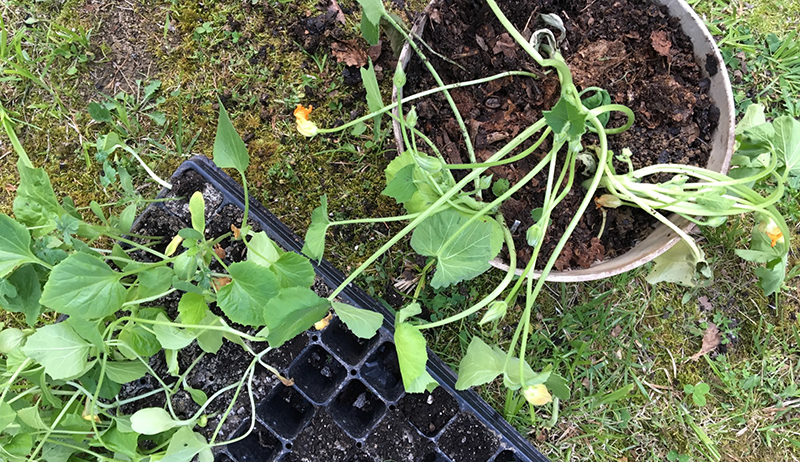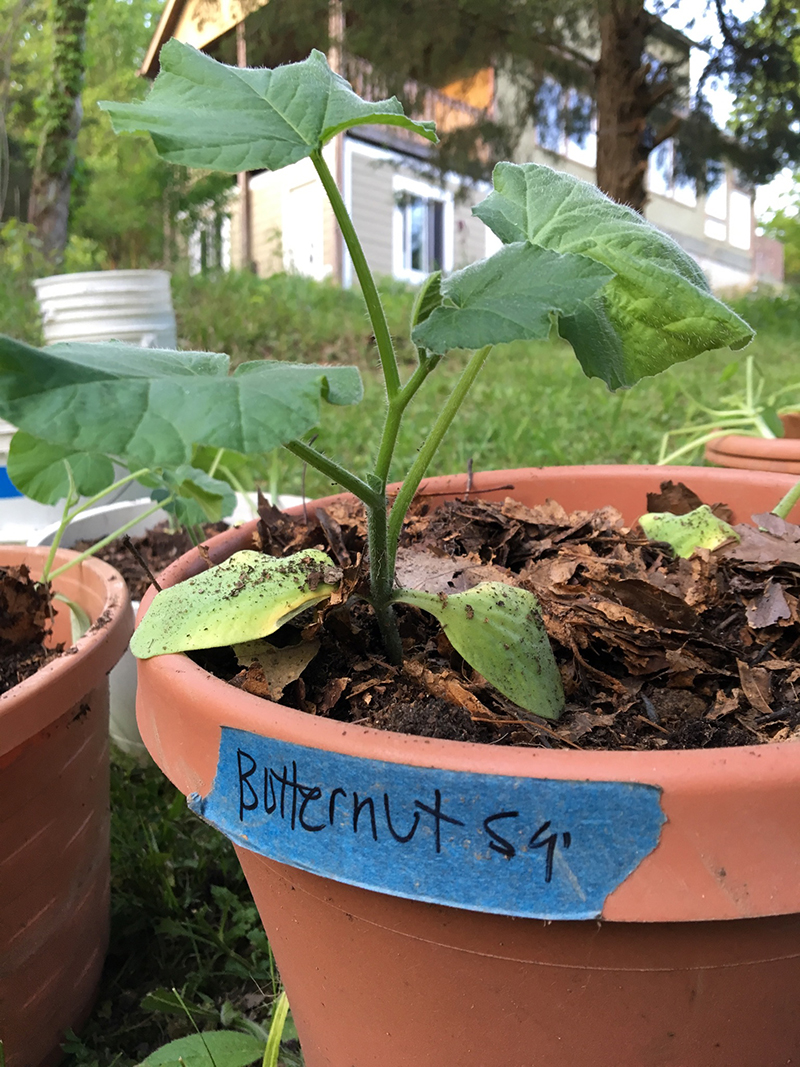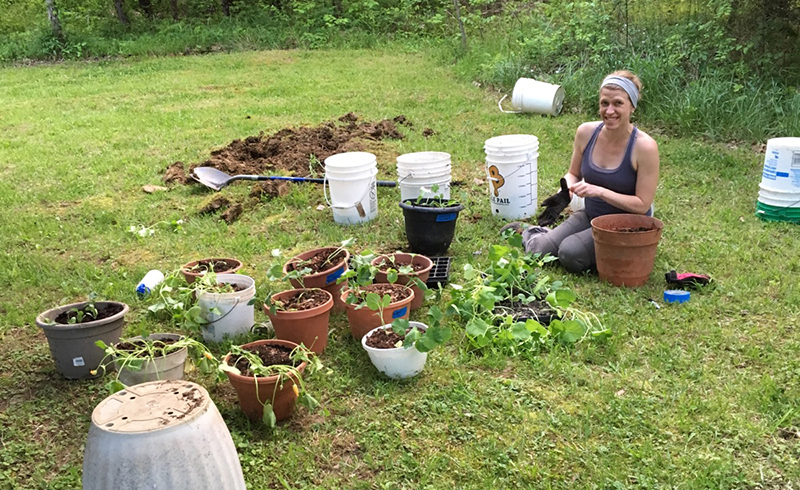
There are two things I’m very new to right now: growing a farm and growing a baby. And as I work to figure these things out, I’ve gotten very behind on accomplishing much on either front. While I was pretty happy with my herb and vegetable garden in town, which grew slowly in size year by year so the task of getting it started never seemed overwhelming, tackling the 50-by-150-foot garden at the farm has been a whole different beast. We’ve had some problems, for sure, but we recently found a work-around for one element—the cucurbits.
First of all, I want to make it clear: Mr. B and I are under no impression that we’re going to farm all 7,500 square feet of garden space this year, especially not with the other things (read: tiny human) that we are preparing for. However, because we moved at the start of the growing season, and I missed out on last year’s gardening fun, I’m eager to get my hands dirty this year.

Currently, about a third off the plot is planted in a spring cover crop mix. We have extremely clay soil in these parts, so I’m hoping to add as much organic material to the garden as possible. Plus, the cover crop will help regulate moisture (the garden is in a bottomland area that gets very wet) and weed pressure. I’m thinking of doing another third in a sunflower cover crop just for fun. It will not only bring me so much joy—I love sunflowers!—it will feed the bees we want to attract to our garden and also attract beautiful birds, such as hummingbirds and goldfinches. The final third we’re dedicating to our vegetables.
This year is the first year I’ve started my vegetable plants from seed. In town, I had neither the space nor adequate lighting to do it, so the fact that I have baby plants ready to put into the ground seems like a miracle. However, because I’ve been struggling with nausea caused by the aforementioned tiny human and have been battling the rain that comes at the most inconvenient of times, my baby plants have become neglected and are in desperate need of transplanting. Yet this is something that our garden—which lacks raised beds, is full of weeds and is way too soggy to work due to yesterday’s rain—is not ready for.
Derby Weekend, the first weekend of May, is the official start of the gardening season here in Kentucky. This is when gardeners get all their signature crops—beans, tomatoes, peppers, basil—into the ground, though many experienced gardeners have already been relishing in the greens and peas that can be grown in the cooler season. As you may have inferred, I didn’t participate in either of these gardening traditions, though my squash plants, which have started to bud even in their tiny seed-starting containers, nudged me into action.
All my cucurbits have gotten quite unwieldy. Zucchini vines have tangled up with butternut squash vines. Cucumbers have begun shooting out the tendrils they’ll soon use to climb trellises. And melons have grown limp and leggy. All are in desperate need of a new home, and because their permanent residence is not quite ready, we had to devise a backup plan.

The solution: container gardening.
In order to give the cucurbits a bit more room, I transplanted three to four plants into each of about a dozen pots I had from my urban-farming days. Now, I wouldn’t usually squeeze the plants in so tight, but like I said, this is temporary housing. I hope to give the cucurbit plants just enough breathing room to survive and become acclimated to the outdoors until I can ready their garden beds and get them transplanted for the growing season.

Mr. B and I prepared their starter homes by mixing farm soil (the really clay stuff) with compost prepared by a friend. Then we tucked several plants into each pot, and we set them in a place where they could get some rain and sunlight and listen to the nighttime serenades of the tree frogs and crickets. (I really think they’re going to like their nightly lullaby.)

In the meantime, my tomatoes, peppers and okra are still holding tight in their original containers, and I’m gathering the tools I need to implement my garden prep plan. It’s coming together slowly, but it’s coming together. If I can bite into a homegrown cucumber or tomato by the end of the season, I’ll consider all of this prep work, no matter how behind it is, to be worthwhile.




